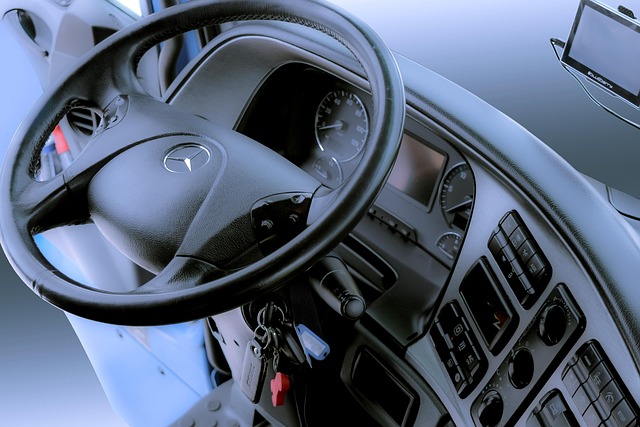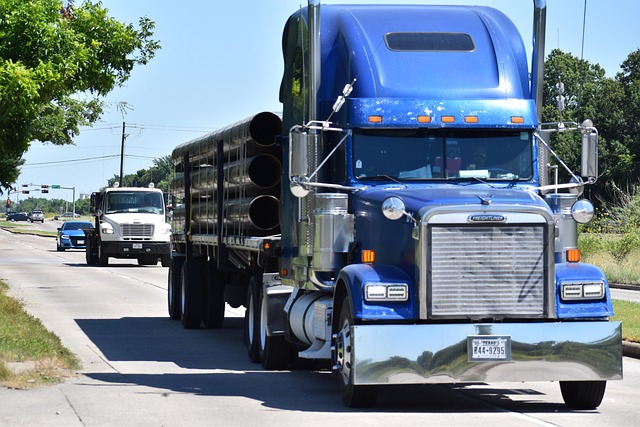Looking to register your car in California? This comprehensive guide walks you through every step, from understanding vital requirements to securing your unique vehicle identification number (VIN) through a verifier. Gather essential documents, visit a DMV office, complete the registration application, and pay fees – we’ve got you covered. Get ready to hit the road legally!
- Understand California Car Registration Requirements
- Gather Necessary Documents for Vehicle Registration
- Visit a California Department of Motor Vehicles (DMV) Office
- Complete and Submit the Vehicle Registration Application
- Pay the Required Registration Fees and Obtain Your Plate
Understand California Car Registration Requirements

Before diving into the registration process, it’s crucial to understand California’s car registration requirements. The state requires all vehicle owners to register their cars with the Department of Motor Vehicles (DMV). This involves providing essential documents and ensuring your car meets safety standards. One critical aspect is verifying the Vehicle Identification Number (VIN) through a process known as a mobile VIN inspection or using a vin verifier. This step is essential for confirming the vehicle’s authenticity and history, which is vital for both legal compliance and personal security.
California has specific guidelines regarding registration, including proof of insurance, emissions tests, and sometimes even additional fees based on the type and age of your vehicle. Owning a car in California comes with responsibilities, but understanding these requirements makes the registration process smoother. Consider utilizing services like mobile VIN inspection or vin verifier to streamline the initial steps, ensuring you’re ready to hit the road legally.
Gather Necessary Documents for Vehicle Registration

Before diving into the registration process, it’s crucial to gather all the essential documents required by California’s Department of Motor Vehicles (DMV). This includes your vehicle’s Registration Application (Form DMV-123), which can be obtained from the DMV website. Additionally, you’ll need proof of insurance, a valid driver’s license, and identification such as a passport or state ID card. The Vehicle Identification Number (VIN) is another critical component, often best verified through a mobile VIN inspection or by visiting your local DMV with the vehicle. Some dealerships provide a mobile VIN verification service, which can streamline this step.
Ensure that all documents are up-to-date and accurate to avoid delays during registration. A properly completed application, along with valid insurance, identification, and VIN verification, will significantly facilitate the process. Remember, a mobile VIN inspection or similar services can save time and ensure you have the correct information for your vehicle before heading to the DMV.
Visit a California Department of Motor Vehicles (DMV) Office

To start the registration process for your car in California, one of the initial steps is to visit a local California Department of Motor Vehicles (DMV) office. This physical interaction is vital for verifying essential documents and ensuring your vehicle meets all state standards. At the DMV, you’ll need to present crucial papers like proof of ownership, insurance details, and identification. The staff will also perform a mobile vin inspection or use a mobile vin verifier to cross-check your Vehicle Identification Number (VIN), a unique code that identifies your car’s make, model, and year. This step is vital for maintaining the integrity of California’s vehicle registration records.
During your visit, be prepared to fill out necessary forms, which can often be found on the DMV website for your convenience. You might also explore options for mobile vin verification services that can streamline this process further, especially if you’re pressed for time or have limited mobility. Regardless of the method chosen, ensuring your car’s registration is up-to-date is a critical aspect of responsible vehicle ownership in California.
Complete and Submit the Vehicle Registration Application

After gathering all necessary documents, it’s time to complete and submit your Vehicle Registration Application. This form is crucial for officially registering your car in California. Make sure to fill out every section accurately and completely. One essential detail is the Vehicle Identification Number (VIN) which acts as a unique identifier for your vehicle. A VIN verifier can be used to ensure the number’s authenticity, especially when conducting a mobile VIN inspection to save you time and effort.
Submitting the application involves sending it to the California Department of Motor Vehicles (DMV). You can do this in person at any DMV field office, by mail, or online through the official DMV website. Remember to include all required fees along with your application to avoid delays in processing.
Pay the Required Registration Fees and Obtain Your Plate

After completing the registration application, it’s time to settle the fees for your car’s registration. The California Department of Motor Vehicles (DMV) sets the cost based on various factors including the type and age of your vehicle. You can pay online, by phone, or in person at a DMV field office. Some additional costs may apply if you choose to register your vehicle annually instead of every two years. Once the fees are paid, the DMV will issue your unique California license plate and provide instructions for its installation on your car through a mobile vin inspection or an in-person plate placement service.
A key part of this process involves using the Vehicle Identification Number (VIN) verifier to ensure that all information about your vehicle matches the data in the DMV system. This step is crucial to prevent fraud and ensures that only legitimate vehicles are registered. Whether you opt for a mobile vin inspection or conduct an inspection at a designated location, this verification process completes the final step before officially hitting the road with your newly registered car.
Registering your car in California is a straightforward process that ensures your vehicle complies with state laws. By understanding the requirements, gathering essential documents like the VIN verifier, and visiting a DMV office, you can efficiently complete the registration. Filling out the application accurately and paying the fees promptly will have your car legally registered and ready to hit the roads in no time.



